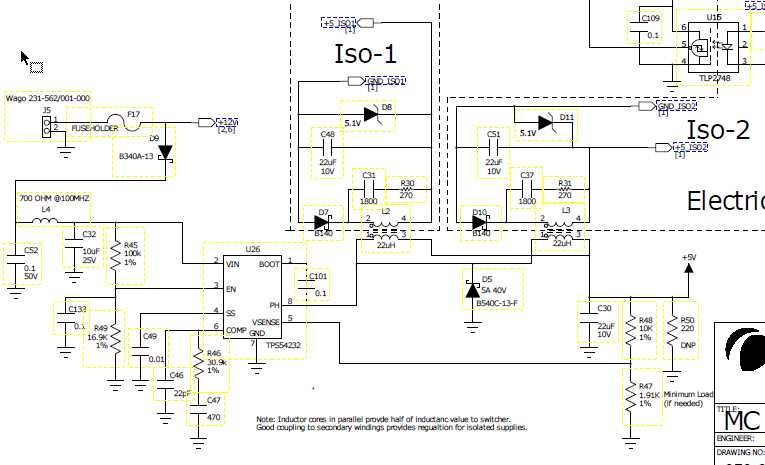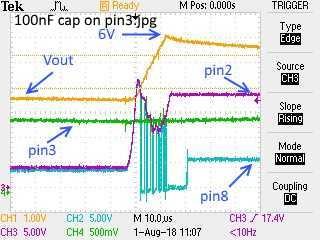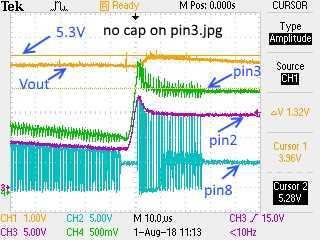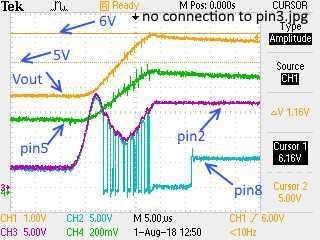I have a TPS54232 12V to 5V(2A) design that overshoots to about 6.5V for 500uS when the power connector cable is disconnected (with occasional "switch-bounce"). I can see the feedback voltage start to drop as the power is removed, but as the bounce re-applies the power, the switch turns on for about 5us, and then the switching action continues for about 10 cycles over the next 8us. the output voltage makes it to the programmed 5V after about 6us, and continues to rise until the switching stops, ending at about 6.5V. My 5V powered BGA processor doesn't like this.
The datasheet (page 12) talks about the Overvoltage Transient Protection (OVTP) that is supposed to take effect at 109% of the programmed voltage. I see a divided version of the output voltage on the sense terminal, so I would expect that the OVTP would stop the switching around the 6uS time (where the output voltage exceeds the programmed value). Since I didn't find any threads on this topic, I'm either a pioneer, or just unlucky. Any hints from users of this part?
I have seen a similar problem with the LM2676S part that was solved by using the LM22676S, which specifically did not have this problem.
Thanks,
Carl
















